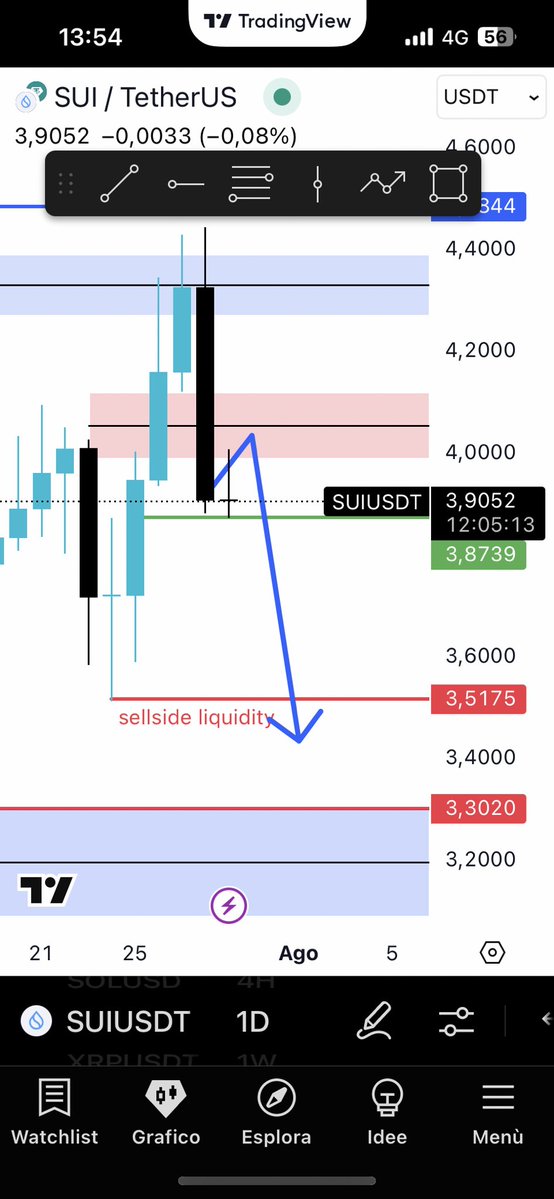The Evolving Landscape of Cryptocurrency Trading
Imagine a world where your digital wallet holds more value than your physical one. Welcome to the future of cryptocurrency trading, a landscape that has evolved from a niche hobby to a mainstream investment strategy. As we stand on the cusp of 2025, the cryptocurrency market is more dynamic and intriguing than ever. Let’s dive into the current trends and insights that are shaping the future of digital assets.
Institutional Adoption and Market Sentiment
Institutional Investors: The New Players
Institutional investors have finally taken notice of the cryptocurrency market, and their involvement is transforming the landscape. With a market sentiment analysis indicating a significant positive score of +0.80, institutional adoption is driving stability and liquidity into the market. This trend is not just about big players entering the game; it’s about bringing a level of legitimacy and trust that was previously lacking. As more institutional investors join the fray, retail investors are likely to follow, creating a virtuous cycle of growth and adoption [1].
Bitcoin: The Flagship Cryptocurrency
Bitcoin, the original cryptocurrency, continues to reign supreme with a positive sentiment score of +0.65. Despite regulatory concerns that cast a bearish outlook with a score of -0.45, Bitcoin remains the darling of both institutional and retail investors. The smart money is flowing in, indicating a strong belief in Bitcoin’s long-term potential. As the flagship cryptocurrency, Bitcoin’s performance often sets the tone for the entire market, making it a crucial asset to watch [2].
Regulatory Environment: Navigating Uncertainty
Policy Shifts and Regulatory Clarity
The regulatory environment for cryptocurrencies is in a state of flux, with rapid policy shifts and increasing clarity. Recent developments in US governance, such as the establishment of a strategic Bitcoin reserve and moves towards regulatory clarity, are significant steps forward. These changes are expected to provide a more stable and predictable environment for cryptocurrency trading, fostering innovation and growth. As governments and financial institutions recognize the benefits of cryptocurrencies, regulatory frameworks are likely to become more favorable, reducing the bearish outlook and encouraging wider adoption [3].
The Impact of Regulatory Concerns
Regulatory concerns remain a significant challenge for the cryptocurrency market. The bearish outlook score of -0.45 highlights the uncertainty and potential risks associated with regulatory changes. However, as the market matures, regulatory frameworks are expected to evolve, providing more clarity and stability. Traders and investors must stay informed about regulatory developments to navigate this uncertain landscape effectively. Understanding the regulatory environment is crucial for making informed decisions and mitigating risks [4].
Technical Analysis: Key Indicators and Trends
Total Market Cap: Consolidation and Resistance
The total cryptocurrency market cap is currently consolidating within a descending channel, facing rejection from the resistance trendline. The Ichimoku Cloud above acts as a strong resistance barrier, indicating potential downward pressure. Traders should closely monitor these indicators to make informed decisions. Technical analysis tools like the Ichimoku Cloud and descending channels can provide valuable insights into market trends and potential price movements. By understanding these indicators, traders can better anticipate market behavior and adjust their strategies accordingly [5].
Bitcoin and Ethereum: Recovery Signals
Bitcoin and Ethereum, the two largest cryptocurrencies by market capitalization, are showing signs of recovery. Bitcoin has been consolidating between $76K and $85K, with the Relative Strength Index (RSI) turning bullish and increasing volume. The key resistance level at $85K could trigger the next leg up. Ethereum, on the other hand, is stabilizing between $1,450 and $1,650, with the RSI bouncing from oversold territory. The key level to watch is $1,700. These recovery signals indicate that both Bitcoin and Ethereum are poised for potential upward movements, making them attractive assets for traders [6].
Technological Advancements: AI and Technical Analysis
The Role of AI in Cryptocurrency Trading
Artificial Intelligence (AI) is revolutionizing cryptocurrency trading by providing advanced technical analysis tools. AI-driven platforms offer free technical analysis, helping traders make data-driven decisions. This technology is crucial for navigating the volatile cryptocurrency market, providing insights and predictions that can enhance trading strategies. By leveraging AI, traders can gain a competitive edge, making more accurate predictions and better-informed decisions [7].
The Future of AI in Cryptocurrency Trading
As AI continues to evolve, its role in cryptocurrency trading is expected to grow exponentially. AI-driven platforms will become more sophisticated, offering real-time analysis and predictive modeling. This will enable traders to stay ahead of market trends and make more accurate predictions, ultimately leading to better trading outcomes. The future of cryptocurrency trading lies in embracing these technological advancements and integrating them into trading strategies [8].
The Future of Cryptocurrency Trading
Embracing Innovation and Adaptability
The future of cryptocurrency trading lies in embracing innovation and adaptability. As the market continues to evolve, traders must stay informed about the latest trends and technological advancements. This includes leveraging AI-driven tools, understanding regulatory changes, and monitoring market sentiment. By staying ahead of the curve, traders can navigate the dynamic cryptocurrency market more effectively and achieve long-term success [9].
Preparing for a Volatile Market
The cryptocurrency market is inherently volatile, and traders must be prepared for fluctuations. By staying informed and adaptable, traders can navigate the market’s ups and downs more effectively. This includes diversifying portfolios, setting stop-loss orders, and staying updated on market news and trends. Preparing for volatility is crucial for mitigating risks and maximizing opportunities in the cryptocurrency market [10].
Conclusion: The Path Forward
The future of cryptocurrency trading is bright, with institutional adoption, regulatory clarity, and technological advancements paving the way for growth. As we move forward, it is essential to stay informed, adaptable, and innovative. By embracing these principles, traders can navigate the dynamic cryptocurrency market and achieve long-term success. The path forward is clear: embrace innovation, stay informed, and be prepared for the challenges and opportunities that lie ahead. The cryptocurrency market is evolving rapidly, and those who adapt and innovate will be the ones who thrive.
Sources





